One of the most expensive and luxurious cities to live in, Zurich is more of a money makers paradise than a cultural hotspot. However, Zurich has cultivated itself by spinning off an amazing mix of design, architecture, gastronomy and art in a refreshing vehicle free atmosphere….some neighbourhoods like Zurich West are deliberately kept free of cars.
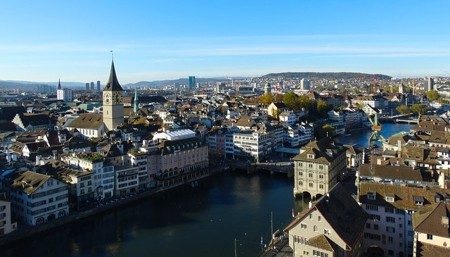
Tourist traffic coming to Switzerland generally goes through Zurich and often find themselves bewitched by its charms. Zurich is very cosmopolitan and fashionable…if you want to holiday in style then this is one of the top places to do so.
A short video
Attractions
Zurich is dominated by the huge lovely lake that it’s named after… Lake Zurich. It was once a normal transportation route but right now it’s an event hub… picnics are held on its banks, swimmers head off in its waters and lots of ferry rides that can offer lovely Alps views are available here.
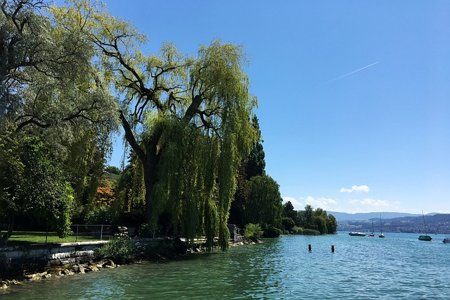
A less talked about aspect of Zurich is its architectural brilliance. This is a wealthy land and many brilliant architects of global repute have created wonderful buildings and constructs here that are of immense aesthetic value. The brand new Europaallee located next to Zurich Main Station is a combined work of many international architects. The 80,000 square meter site is great to look at (architects from Amsterdam and London have created it) and houses a part of Zurich university, lots of shops and restaurants.
The Student Village ETH, Prime Tower, Leutschenbach School, Freitag Tower (made from shipping containers), Stadelhofen Station (made by star architect Calatrava) and K.I.S.S building in Zurich West (irregular with lots of candy colour windows) are star attractions in their own right. The city has spent a lot of time, money and talent in beautifying its body. Zurich is known for its excellence in academics and research and a trip to the Swiss Federal Institute of Technology (ETH) and the Zurich University is recommended.
The Pavillon Le Corbusier not only hosts fantastic art collections including sketches, oils, sculpture and even conceptual furniture; its colourful steel/glass exteriors and superlative design make it an attraction worth a hundred Instagram posts. It is the last design work of the legendary Swiss-French architect Le Corbusier.
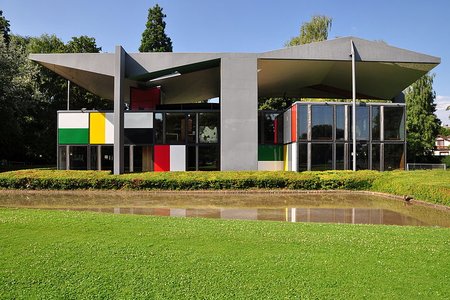
The Old town zone Niederdorf is called by a cute nickname… Dorfli. It has little alleys that are car-free and winding and possess a historic church Grossmunster along with a bevy of bookshops, boutique stores and craft studios. The quaint charm of a typical Swiss town can be best felt here. This is a shopping and architecture hub and is best explored by a long stroll. In the evenings, Neiderdorf turns into a great nightlife venue in Zurich.
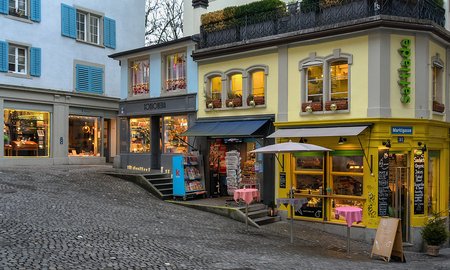
Look out for the Opernhaus Zurich which’s a musical mecca…many famous singers and performers (including Mozart and Shakespeare) have hosted shows here and frequent ballet performances also take place. The modern theatre in the old town has a modernistic design and holds contemporary plays and children’s events.
However, the most beautiful concert hall is Tonhalle Zurich in Claridenstrasse that dates back to 1895. More than 100 concerts happen here annually. As a lovely gesture, the tickets have been kept free for the differently-abled.
Fraumunster Church (Women’s Church) is an abbey that was established in 853 by Emperor Ludwig. The convent and church were an ode to the female aristocracy of Europe. The gothic building is lovely but the stars of the show are the 5 tiered cycle in Rosette and Chancel (added by Marc Chagall) and a huge stained glass window (added in 1970 by Augusto Giacometti).
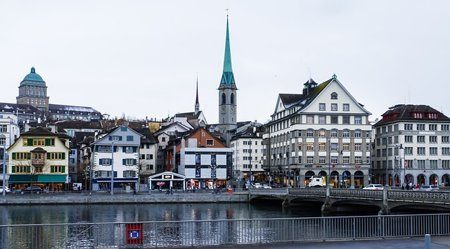
The austere Grossmunster (the Church of the Great Minister) is a dedication to the patron saints of Zurich Regula and Felix and was built by Charlemagne. Otto munch built the roman looking crypt and bronze doors while Augusto Giacometti made the choir windows while Sigmar Polke created the giant stained glass windows.
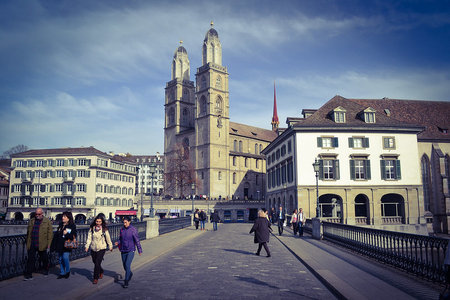
St Peter’s Church is the most standout building here with a clock face diameter spanning 8.5 meters and five antique wells that weigh tonnes. The foundation walls are 9th century making it one of the oldest churches in Switzerland.
Schweizerisches Landesmuseum/ Swiss National Museum looks like a fairy-tale castle with its reflection in the clear lake flanking it. One of the most beautiful museums in Europe there is a staggering collection of historical and cultural exhibits here…taking the guided tour here is recommended.
Another beautiful museum nestled inside a garden (incidentally the biggest public park of Zurich) is the Reitberg (look out for the blue-green glass entrance). The gorgeous collection of art from all across the globe is hosted inside the museum including African sculptures, Asian Buddhist art, South American artefacts and Swiss handicrafts (look out for the exquisite Swiss masks).
Speaking of museums, football fans can straightaway make their way into FIFA world football museum that mysteriously stands in the worlds banking capital. Exhibits that date back from the first world cup in Uruguay to the current ones are housed here. Zurich breathes of money so the Money Museum in Hadlaubstrasse is well placed. Apart from learning about the history of money, you can view some antique coins that won’t be found anywhere else in the world.
Zurich has many art galleries of international repute and the jewel amongst them is the Kunsthaus in the Heimplatz area that contains more than 4000 works of art…there is no better place to map the work of contemporary Swiss artists. The twin chic galleries of Migros and Kunsthalle in Limmatstrasse in West Zurich offer an impressive collection of 21st century Dada works.
The 4th-century fort that’s now a lovely park filled with Linden trees… Lindenhof is the best place to spend a blissful quiet hour in Zurich. Engage yourself in one of the giant chess sets that dot the park and take in the wonderful views of the Great Minster and Old town or simply nature watch. The park is at an elevation so you would have to manage a small uphill climb.
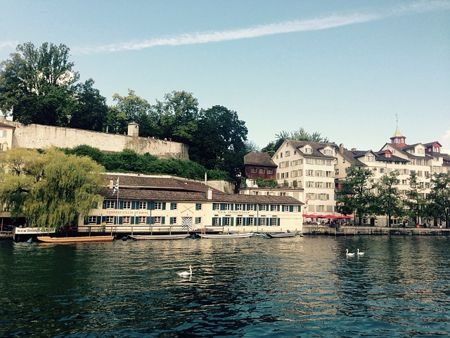
Just below the Lindenhof is the Schipfe that’s Zurich’s oldest quarter and this was when trade boats loaded with gold, silk and merchandise were pushed into swiss harbours (incidentally schupfen means ‘push’ in swiss). Great food, shops, natural beauty and a boat making and bathhouse hub…the Schipfe is a good place for a culture stroll.
The Platzspitz public park is shaped like a triangle and converges the two lovely rivers Sihl and Limmat together. It’s quaintly named Needle Park and was once a famous hangout for addicts. Thankfully the park has restored its image now and artists and musicians can be often seen sharpening their skills here.
Another lovely spot to appreciate nature is the Gruningen Botanical Garden that has 16 different sections containing more than 9000 flora species from all across the globe. Protection, ecology, biodiversity promotion are just some of the goals that this garden runs on in the rather concrete heavy Zurich.
Also in Belleriverstrasse is the Chinese Garden that contains a tiny island, pond and a quaint palace…this was a gift from Kunming; it’s rather startling to suddenly enter a Chinese environment inside a Swiss town.
The Zurich Zoo in Zurichbergstrasse is no ordinary place, a wide variety of animals (gorilla, penguin, snow leopard, tiger, tortoise, bear etc) dwell here, in carefully protected natural enclosures. The cultured Masola Rainforest and the Kaeng Krachan Elephant Park with a glamorous residing elephant family are added attractions. This zoo is up on a small hill and right beside it is a pretty and neat cemetery (Fluntern) where the famous author James Joyce and his partner Nora Barnacle lie buried. Elias Canetti the well-known Bulgarian author also lies here.
A short distance away is Fifa HQ, an edifice with a gorgeous glass front. Go further and you can see the old botanical garden near the City Centre.
Zurich is very walking and biking friendly…cars are restricted in many parts of the city. Go explore the guildhalls that mark the city (it was not the religious but the merchants who ruled this city). There is the baker’s guild and the food and wine guild, the textile guild and spice guild and goldsmith guilds (zunfthauser) in different areas of the city.
In Zurich watching open-air cinema is a great tradition. The Bloom movie theatre (first come first served) in the National Museum courtyard in central Zurich offers an extraordinary gastro-cinematic experience. The Allianz open-air cinema on Lake Zurich banks also offers a good experience.
The city doesn’t have direct access to the Alps but it has a mini-mountain…the Uetilberg which offers the amazing Alps, lake and city view from 2850 feet above sea level. The mountain is a hotspot for paragliding, picnics, hikes and biking. Come winter… skiing and sledging are also fun. Zurich has excellent access to the best ski resort zones of Switzerland like Amden, Stoos and Hochstuckli.
Food and Drinks
Traditional Swiss food is hearty and simple but Zurich is not the ideal place to have conventional Swiss food. World food of exceptional standards are offered here and Zurich has the highest percentage of Michelin star restaurants in proportion to population. However, there are some standard Swiss dishes that are readily available in Zurich like the cheese fondue (melted cheeses with assorted diced veggies), Rosti (fried potatoes), raclette (melted cheese with spicier accompaniments).
If you can pronounce Zurcher Geschnetzeltes do have it… it’s veal slices cooked with onions, wine and cream along with noodles/ rice. Very few people know that muesli originated in Zurich when a certain doctor Max Bircher started feeding patients cereals and fruits in delightful combinations. So a good swiss Bircher muesli breakfast is a must in Zurich…you can also take some original swiss muesli packets back home.
Confiserie Honold, John Baker Helvetiaplatz, Café and Restaurant Sprungli, Café Hubertus, Café Felix, Vollenweider Café are some of the best places to go that serve the original apple rich lemon and honey enriched muesli.
Zurcher Eintopf has a luscious mix of carrot, pork, onions and potatoes cooked in white wine…if you arrive here in chillier days then this will warm you up. Cured dried beef cuts are readily available in Zurich; these are called Bundnerfleisch and are a part of many recipes.
If you are vegetarian then a visit to Haus Hiltl… the world’s first vegetarian restaurant is a must. The special tartar made from eggplant, okara and spice is a must-try here. Zeughauskeller that’s housed in a traditional armoury is a good place to sip on ale and the standard swiss bar snacks that rely heavily on cheese. Right next to Europaallee is Loft Five that serves excellent salads, burgers and casual food.
When in any part of Switzerland you will be spoilt for choice when it comes to the dessert menu but still do try the Zuger Kirschtorte (layered cake with nutty meringue, buttercream and sponge and cherry brandy drizzles). Zurich has loads of delish bakeries but look out for the multi-branched St Jakob that only employs the differently-abled.
A great way to experience Zurich is by going on a food walk that generally winds through the sophisticated Zurich west and the Viadukt zones.
Nightlife
The best place to experience nightlife in Zurich is the old town on the left bank of the Limmat River. There are streets like Oberdorfstrasse and Neiderdorfstrasse that have a large variety of bars. The Zurich west area (especially the 4th and 5th district) sees new clubs and bars being opened every week and Escher Wyss Platz and Landstrasse are the best areas to look for nightlife. Most clubs and bars remain open till 2 a.m.
There are exceptional bars with a superlative ambience in Zurich. The Clouds Bar (honestly named) is on top of Prime Tower; Switzerland’s tallest building. Cabaret Voltaire offers traditional drinks in a cultural space that is dominated by Dada…you can also buy artwork and souvenirs here. In Napgaffe there is a 19th-century vintage café with baroque décor and an excellent alcohol list. Babalu in the Neiderdorf area, Jules Verne Panorama bar in Uraniastrasse, Dante in Zurich west with its focus on gin-based cocktails are great names too.
Die Zukunft in Dienerstrasse is a great space for crossover, electro and fusion music while Gonzo on Longstrasse is pop music only venue. Exil in Hardstrasse offers indie rock, electro and folk music while Kanzlei in Kanzleistrasse has a superb dance floor. Other great clubs are Mascotte in Theaterstrasse, Hive in Geroldstrasse and Kaufleuten in Pelikanstrasse all of which are dancing hotspots.
If you want to hear live music then Moods in Schiffbau (great jazz), Volkshaus (variety of gigs) in Langstrasse are nice places. Most of the bars, clubs and discos in Zurich are expensive and high on aesthetics.
Shopping
Even if you don’t actually shop at Bahnhofstrasse it’s a ritual to take a stroll along it admiring the glittering storefronts. The neighbourhood stretches from the old town, Hauptbahnhof station to Zurich Lake. This area is all about Armani and Burberry and Louis Vuitton and Chanel, so be prepared to shed a lot of money.
Here you can also visit the exquisite Gueblin AG Jewellery shop and the Schweizer Heimatwek (which sells original swiss cuckoo clocks). The Hauptbahnhof has Swatch Zurich Bahnhof that’s one of the best places to shop for contemporary swiss watches.
The Im Viadukt is charming with an antique railway viaduct that hosts a market under its arches. There are restaurants and shops and cafes here that aren’t as expensive.
The Schipfe and the stretch along Limmat river is an artisan hub… this is a good place to shop for custom made and boutique products. There are great standalone jewellery and silk stores here too along with artisanal stores.
The Neiderdorf area and the Langstrasse are meant for budget shopping. The Burkliplatz boat dock area is also good for shopping which you can obviously combine with an exploration of the lakeside promenade. The Sunday flea market is exceptionally good and one of the rare chances to pick up affordable stuff.
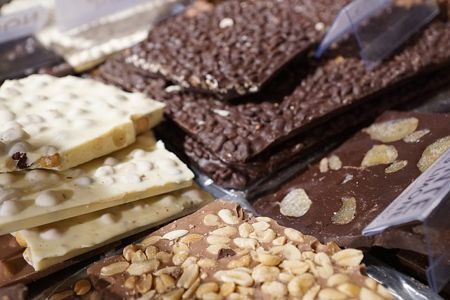
A trip to Zurich is obviously incomplete without shopping for the world-famous Swiss chocolate. Confiserie Sprungli on Bahnhofstrasse is one of the biggest names for chocolates, pastries, truffles etc. Umpteen chocolate stores dot Zurich and you just might have to buy an extra luggage bag for all that swiss chocolate you will shop for.
Getting to & around
Zurich has awesome integrated travel systems that make moving in and moving around very easy. The best part is that public transport is centralised …one company controls the major chunk and one card can get you great discounts and it’s easy to understand.
Flights
Zurich’s Kloten airport is about 13 km north of the city centre and has 3 terminals. This is one of the most well-connected airports in the world and every major city in the world has direct or connecting flights to it.
You should get a Zurich Card discount and Travel Pass that will allow you to use the city’s excellent transport networks with trains, trolleybuses and trams along with night buses….airport transfers, discounts on museum tickets. City tours and shops are also a part of the card.
Train
Zurich HB/ Hauptbahnhof is the biggest station in Switzerland and it’s at the heart of the city. Trams and trains all depart from this place. You can travel from Germany, Austria, France, Italy and Spain via train to Switzerland’s Zurich. This station is a member of the Rail City Network and has more than 200 underground shops from where travellers can buy snacks and artefacts. The City Night Line, TGV Lyria and ICE lines run through this station.
The local trains are called S Bahn and they run from 5.30 a.m. to midnight. Trains run from the main station to the airport every 15 minutes (an 11-minute journey only). Besides the main station, there are three other stations; Opfikon, ZH Stetbach and Flughafen station. The S4 line that goes along Sihl River and S10 that goes till Uetilberg offer immense aesthetic value.
Polybahn meter gauge funicular trains link the city centre to the University of Zurich while Seilbahn Rigiblick serves north Zurich and provides stunning views.
Trams
The Forchbahn interurban tramway runs on standard tram tracks inside the city boundaries and through the swiss village of Zumikom. In Zurich tram, local train and bus lines are all linked together and you can use all three in synchronisation to reach almost everywhere around the city. The tram stops at Bahnhofstrasse, Rennweg, Paradeplatz and Boersenstrasse….this is a major shopping and sightseeing zone.
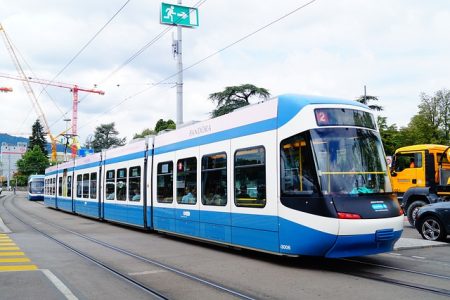
Bus
City buses are run by Zurcher Verkehrsbund that controls the train as well as tram lines. There are more than 60 bus lines including trolley buses and regular buses. The bus network can be divided into Stadtbusnezt (city bus network with 15 lines), Quartiernetz (9 lines to city outskirts), Regionalnetz (buses to busy city regions) and Nachtnezt (14night bus lines that run on Friday to Sunday).
International buses go to many French, Austrian, German, Croatian and Bosnian cities but it’s easier to take the train for long-distance travel. International buses run to and from Shilquai that’s the biggest bus zone in Switzerland.
Sightseeing tours via the ferry (Lake Zurich) and the aerial cable car (Adliswil Felsenegg cableway to Felsenegg vantage point 800 meters above sea level) are also attractive ways of seeing the city.
Read: How to get around Zurich using public transports
When to go
The high tourist season and the best time to visit Zurich is between June to August and it has pleasant weather. This is when you can easily swim in Lake Zurich but this is also when you have to empty all your pockets (expensive Zurich is more expensive then). December, January and February is skiing season and hotel prices are high as Zurich is the gateway to the best ski slopes. March to May and September to October are the most affordable times to visit but the weather will be pretty cold so lake dipping isn’t recommended.
Read: Important weather information of Zurich and Switzerland.
 A travel addict. Still celebrating the day when he quit his high-profile corporate job to pursue his passion for travel writing.
A travel addict. Still celebrating the day when he quit his high-profile corporate job to pursue his passion for travel writing.